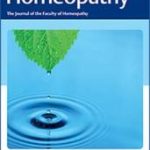Use of complementary and alternative medicine by patients with hypermobile Ehlers–Danlos Syndrome: A qualitative study

Background – Patients with hypermobile Ehlers–Danlos Syndrome (hEDS) often make use of complementary and alternative medical (CAM) techniques to manage their chronic pain and other symptoms. Nevertheless, how they use CAM, which techniques they favor, and how CAM use affects their allopathic care remain unclear. The purpose of this qualitative study was to understand patients’ personal experiences with CAM and its role in their symptom management. Materials and methods – Thirty individuals living with hEDS completed a brief online survey related to their CAM use. Thereafter, in-depth interviews were conducted with 24 of the survey respondents, qualitatively investigating their experiences with CAM. Data were analyzed using thematic analysis. Results – Participants described massage therapy (N = 21), medical cannabis (N = 12), and mindfulness (N = 13) as some of the most useful CAM modalities for managing symptoms related to hEDS, but they expressed a general interest in pursuing any treatment that could potentially reduce their chronic pain. They suggested an overall trust in CAM modalities and practitioners and ascribed greater empathy to CAM practitioners than to conventional medical providers. However, they also described a critical skepticism of CAM (and conventional) therapies and recounted instances of injury from such treatments. Conclusion – Participants made extensive use of CAM therapies. They described both critical benefits as well as harms from the use of these non-conventional modalities. These results underscore the importance of clinicians maintaining communicative and compassionate relationships with their patients, and of an openness to the discussion and use of CAM treatments.






Lascia un commento
Devi essere connesso per inviare un commento.